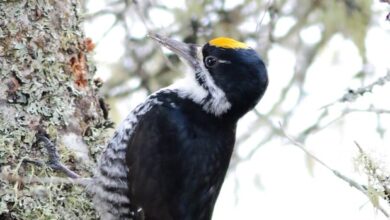Researchers search for answers to declining moose population in northwestern Ontario

The decline of moose populations in northwestern Ontario, particularly around Thunder Bay, has raised concerns among researchers and conservationists. Brent Patterson, a senior research scientist with the Ministry of Natural Resources and Forestry, is leading a team dedicated to understanding the reasons behind this decline. The team has been placing tracking collars with GPS on moose to monitor their movements and survival rates.
According to Patterson, recent surveys have shown a significant decrease in the moose population in Wildlife Management Unit 13, with numbers falling well below the provincial objectives. While adult moose have relatively high survival rates, the same cannot be said for calves. The team has observed a low survival rate among moose calves, with many falling prey to predators like wolves and bears.
Patterson emphasized the need to investigate other factors that may be contributing to the decline in calf survival, such as habitat landscape and predation patterns. The team is working to gather more data to pinpoint the root causes of the issue.
Mark Ryckman, manager of policy at the Ontario Federation of Anglers and Hunters (OFAH), has called for a comprehensive review of moose management practices. He highlighted the importance of considering factors like predation, diseases, habitat capacity, and forest management in addressing the decline in moose populations. Ryckman also stressed the need for greater collaboration with Indigenous communities that depend on healthy moose populations.
As the moose population continues to dwindle, Ryckman expressed concerns about the impact on hunting opportunities and the socio-economic benefits associated with moose hunting. He noted that many hunters are losing faith in the government’s ability to manage moose populations effectively.
Despite the challenges, the MNRF tracking project has made significant progress in monitoring moose populations. Over a hundred moose have been equipped with tracking collars, some of which also have video capabilities. Patterson acknowledged that it will take time to gather enough data to determine the underlying factors contributing to the decline in moose populations.
In conclusion, the efforts of researchers and conservationists to understand and address the decline in moose populations are crucial for the preservation of these iconic animals in northwestern Ontario. Collaborative approaches and innovative tracking technologies will play a key role in safeguarding the future of moose in the region.




